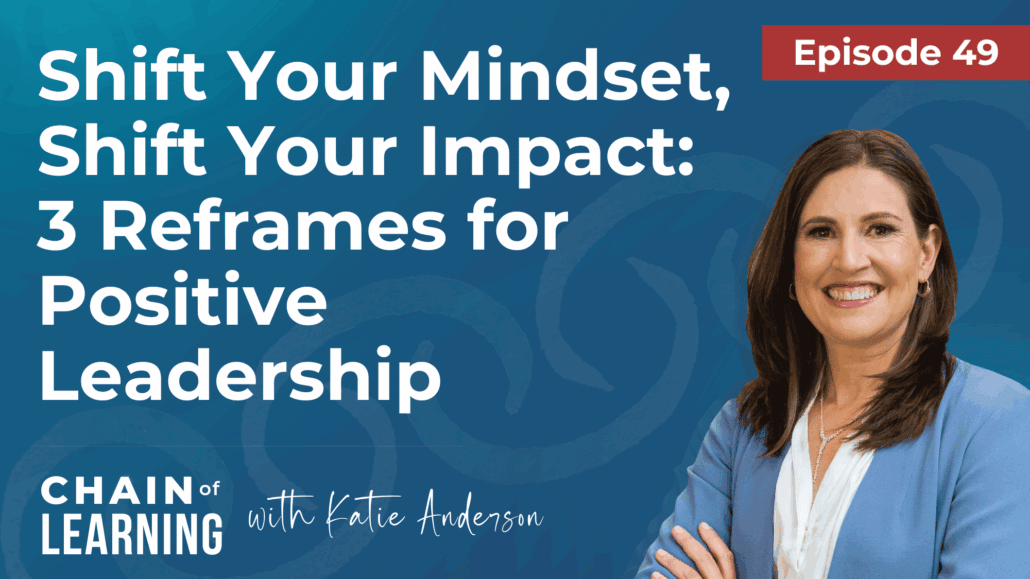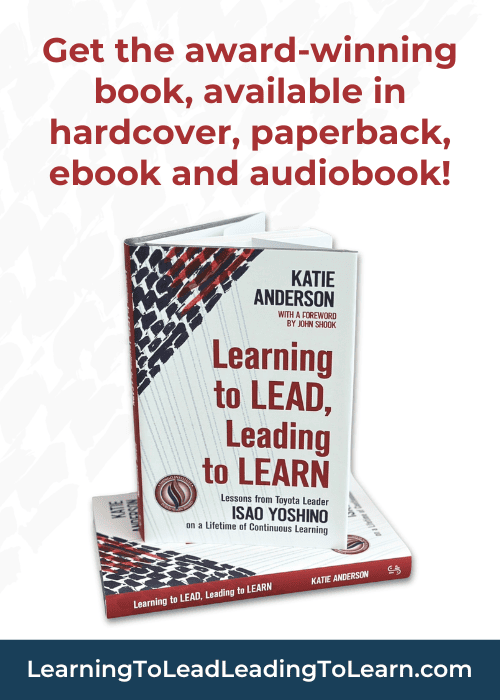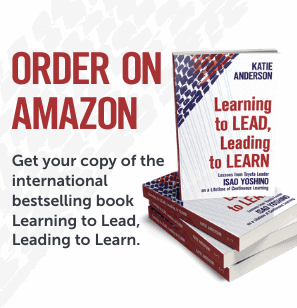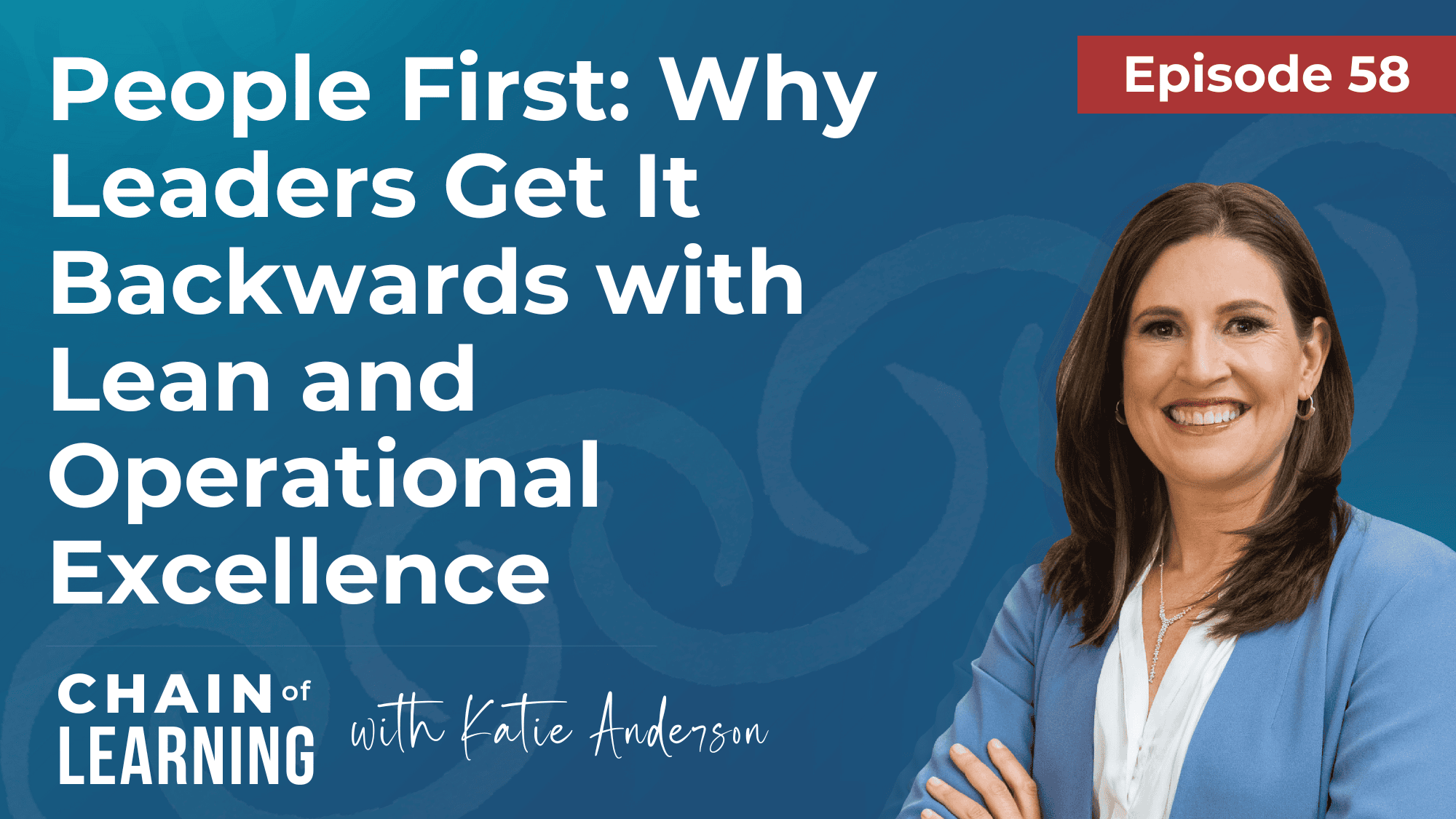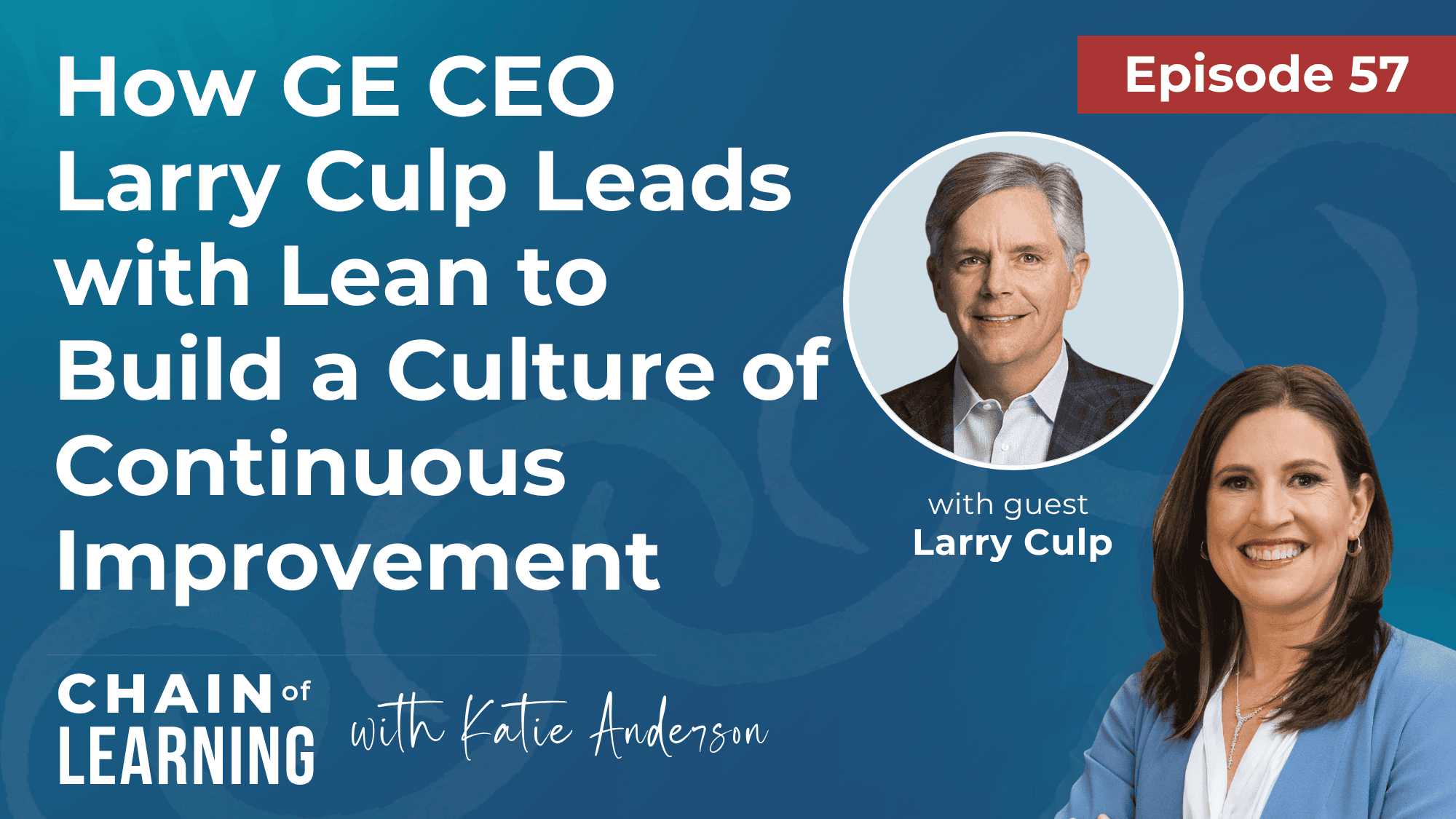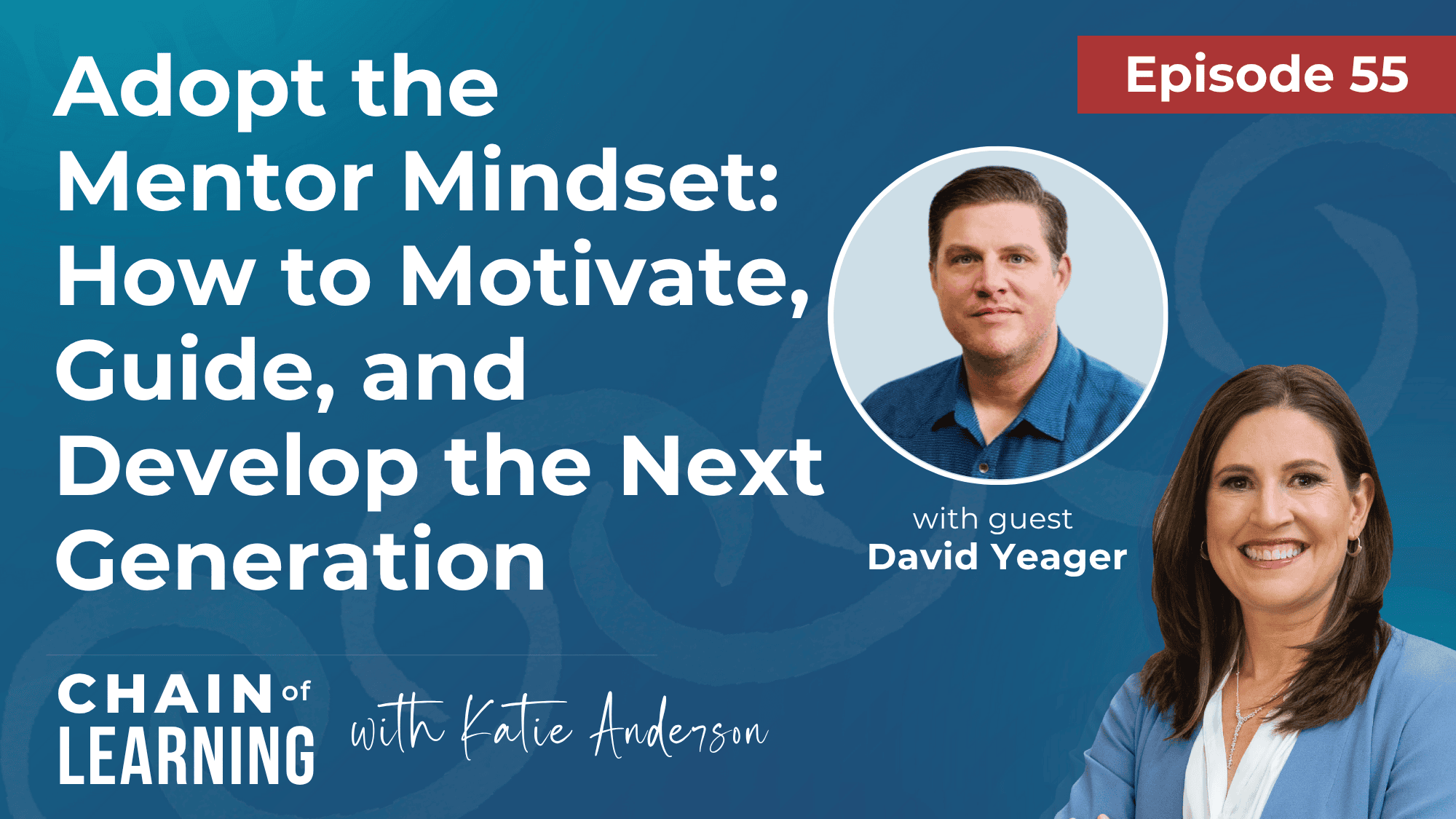Turn Setbacks into Momentum with These 3 Mindset Shifts
When you encounter challenges or setbacks, and it feels like things just aren’t going your way, it’s easy to get caught into a downward negative spiral.
But could simple mindset shifts change not just how you feel, but how you move forward and influence those around you with positive momentum?
In this episode, I’m sharing three powerful reframes that have helped me reset, regain perspective, and move through challenges with intention and empowerment.
These reframes aren’t just personal practices—they’re leadership strategies that can help you model resilience, learning, and agency, and inspire the people around you to do the same.
This episode isn’t about blind optimism or sugarcoating hard things. It’s about real, actionable ways to reframe challenges and move forward with greater clarity, strength, and purpose.
In this episode, you’ll learn:
✅ How to reframe your focus from negative to positive and rise with more clarity and confidence
✅ The story behind the motto that inspires me daily –“Today’s a great day” – and how gratitude can ground you in tough moments
✅ Why setbacks and failures aren’t the end, but an opportunity to learn your way forward
✅ How the Japanese daruma doll became a lesson in resilience—representing the proverb “Fall down seven times, get up eight”
✅ How to move from feeling powerless to empowered and why the ball is always in your court
Listen Now to Chain of Learning!
Tune in to learn the three reframes that have helped me (and the leaders I work with) get back up and lead with heart and intention.
Watch the Episode
Watch the full episode on YouTube.

Why Today’s a Great Day!
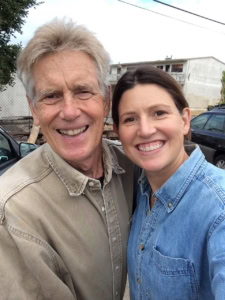 One of the biggest influences on my positive mindset comes from my father, Hardy Jones.
One of the biggest influences on my positive mindset comes from my father, Hardy Jones.
His personal motto—“Today’s a great day!”—has shaped who I am and continues to inspire me to live with intention, get back up when I fall, and embrace life with gratitude and energy.
That perspective carried him through life’s highs and lows and still inspires me today. It reminds me that finding even one small positive moment—a warm smile, a sunny sky, a meaningful conversation—can shift your focus and help you move forward.
The saying “Today is a great day” encapsulates my dad’s positive energy and spirit about:
How can we find the positive in our day?
How can we anchor on the good?
How can we use our focus on the positive to pull us through those challenging times?
… when today may actually not be that great of a day.
It’s a mindset I carry into my own life and leadership—and one I share in this episode to help you navigate both the great days and the challenging ones.
Reflect and Take Action
Are you stuck on what’s broken—or ready to notice what’s good?
Is there a setback you’re facing that might actually be a lesson in disguise?
Have you forgotten that the ball is still in your court—and that you always have the power to respond with purpose?
Pick one reframe to practice today.
Take a breath.
Create an intention pause and reconnect with who you want to be—and what that version of you would think, do, or say.
- Notice something good.
- Celebrate a small win.
- Focus on what you can do.
Because how you show up, what you focus on, and how you react—it all matters.
What’s one intentional shift you can make today to create an upward spiral—for yourself and for others?
Important Links
- Check out my website for resources and ways to work with me
- Follow me on LinkedIn
- Download my free KATALYST™ Change Leader Self-Assessment
- Read my book featuring lessons from Isao Yoshino’s 40 years of Toyota Leadership: Learning to Lead, Leading to Learn
- Episode 9 | The 8 Essential Skills to Become a Transformational Change Katalyst™
- Episode 5 | Achieve More by Performing Less with Eduardo Briceño
- Episode 25 | Get Results Through the Power of Serious Leadership with Kecia Kelly and Amy Chaumeton
- Episode 39 | Doing More Isn’t the Answer: Why Simple Wins with Lisa Bodell
- Episode 28 | Leading Organizational Transformation the Right Way with Cindy Hinds
- Read my article on Why Today’s a Great Day
- Learn more about how to use daruma dolls
Listen and Subscribe Now to Chain of Learning
Listen now on your favorite podcast players such as Apple Podcasts, Spotify, and Audible. You can also listen to the audio of this episode on YouTube.
Timestamps:
01:56 – [FIRST REFRAME] Find the good—even when it’s hard
02:03 – Katie’s dad as the inspiration behind the motto, “Today’s a great day”
04:23 – Isao Yoshino’s influence in learning how to shift from negative to positive
07:22 – The importance of focusing on the good to bring opportunities for improvement
09:23 – [SECOND REFRAME] Seeing failures and setbacks as learning opportunities
10:17 – Why daruma dolls are a reminder of resilience – falling down seven times, get up eight
12:04 – Questions to reflect on to maintain a learning mindset
12:33 – The difference between the learning zone and the performance zone
13:37 – Learning experience to help you see failures as part of the learning process
15:17 – [THIRD REFRAME] Moving from powerlessness to agency
15:51 – The meaning behind, “The ball is in your court,” to help you control how you respond to negative conditions
17:07 – The difference between achieving goals and fulfilling your intention
18:14 – Katie’s previous organizational role that was left unclear and how this launched her consulting agency
20:19 – How two executives used coaching and reflection to shift from solving problems themselves to enabling their teams
21:26 – Stepping away from frustration and reframing the problem to influence things differently
22:51 – Exercise to help you move from feeling powerless to powerful
23:33 – Summary of the three powerful reframes to help you get back up when things aren’t going your way
25:31 – Questions to reflect on to help shape your day and impact
Full Episode Transcript
Katie: [00:00:00] When things aren’t going your way, whether as a leader or change practitioner or in your personal life, it’s easy to spiral downward. But today I’m sharing three reframes that can shift your mindset and your momentum in a whole new direction. And in doing so, and. You can inspire and infuse positive momentum in those around you.
Welcome the chain of learning where the links of leadership and learning unite. This is your connection for actionable strategies and practices to empower you to build a people-centered learning culture, get results, and expand your impact so that you and your team can leave a lasting legacy. I’m your host and fellow learning enthusiast, Katie Anderson.
One of the things people often tell me is that my positive energy is infectious, that it lifts them up, whether it’s from a keynote on the main stage of a conference or industry event in a coaching session or workshop, or right here on this podcast, and I’m so grateful for that feedback because positivity is something I try to embody [00:01:00] intentionally.
It’s also one of my top strengths, according to the Clifton strengths finder right up there with learner and achiever. But here’s the thing, this attitude isn’t something I was magically born with. It’s been shaped by powerful influences, experiences, and intentional choices and practice over time. And that’s exactly what I wanna share with you today.
I believe the principles that shape a positive mindset are learnable. There are reframes that any of us can practice and grow into. And today I wanna deconstruct them for you. This episode isn’t about being blindly optimistic or pretending everything’s fine when it’s not. It’s about real actionable ways to reframe challenges and to move forward with greater intention, resilience, and empowerment.
So let’s explore these three reframes that have helped me get back up when I’ve been knocked down. And then I believe that can bolster and lift you up too, both in your leadership. In your life. The first reframe is from negative to [00:02:00] positive. It’s about finding the good even when it’s hard. The most inspirational person for me and really understanding this shift of mindset is my dad, whose motto was today’s a great day this year would’ve been his 80th birthday.
He died at the age of 71 from a LS right after we’d moved back from Japan in 2016. Not only did he have a LS at the end of his life, but he had been disabled in his early twenties from a motorcycle accident, which had left him in the hospital for two years, coming out disabled, barely able to walk. But he never let that challenge get in the way of his positive attitude, the way of approaching the goodness in life.
And decades later, when he was diagnosed with a LS and was losing not only his ability to walk, but to move his hands and eventually breathe. He showed up every day with a sense of positivity, of finding the goodness in each day that today’s a great day. Sometimes [00:03:00] even when the big challenges were there and things were really hard, it might be finding the good that it was just sun that was, you know, touching his face while he was sitting outside, or the fact that I was able to bring his young grandchildren over to spend the day with him.
The concept of today’s a great day of finding the goodness in each moment, or something good in today is not about having a false sense of positivity, but it’s about the gratitude and finding something that is good to help you move through the challenges and disappointments in life through the loss, through the grief, through the frustration.
When we can find the good, the positive angle, we can use that to help pull us through. It’s about celebrating the things that are positive in our life and using that to anchor us and ground us and pull us up towards and through the challenges. So even though. Of course it was devastating to have this ALS diagnosis and for my dad to experience moving from being an athletic person to being a disabled one.
Having the spirit of today’s a great day [00:04:00] is what led him to lead life with positivity and help others as well. I found a kindred spirit in Mr. Yoshino too, the subject of my book, learning to lead, leading to Learn, and I know that he and my father would’ve really appreciated each other. I met Mr. Yoshino in the last year of my dad’s life when we were living in Japan, and that relationship bloomed as my dad’s life was ending.
Mr. Yoo’s sense of positivity too has greatly influenced me. And some of the stories that we share in learning to lead, leading to learn are about his own experiences of learning how to make a mindset shift from negative to positive. In fact, he says in the book, and this is a quote that I have during a period of time, which he experienced one of the greatest disappointments of his whole career when he thought what he achieved was his great dream assignment of moving to the United States, and then it turned out that it was really not what he had hoped for.
He said, if you’re too focused on the bad, you’ll only see the bad side of [00:05:00] things. If you decide to focus on the good, you can learn so much more, and that’s really what happened for him. He decided to focus on the good part of his assignment, not the fact that he really didn’t like his boss, and he thought that the things he was being assigned just weren’t that interesting.
He made a mindset shift to find the good. He decided that even if he didn’t really like who his boss was, he could find the good in what his boss could teach him. For example, he really thought his boss was quite good at some aspects of leadership, and so he focused his energy on that. What could he learn from him?
What could be good, and then he challenged himself and his team. To be the best at their job, even though he felt like what they were doing and what they had assigned to do was very sort of small and maybe meaningful. He called it being a gopher, basically doing errands for the executives who’d been assigned to support the new me training program, which we talk about in an upcoming episode, but it wasn’t what he thought it would be.
But by making that [00:06:00] mindset shift and by focusing on the good aspects of his assignment and reframing it as a way for growth for himself and his team, he was able to have so much greater impact. I encourage you to read Learning to Lead, leading To What Learn. If you haven’t heard this story before, it is a really powerful inspiration about how you can make this mindset shift in finding the good and focusing on the good.
I’ve embodied this positive energy that I’ve learned from my dad. This positive mindset shift that today’s a great day. It threw so much of my life. A few years ago I had a terrible ski injury that required me to have two knee surgeries and took me out for almost a full year, and people asked how I could stay so positive during that and.
I told them I knew I could dwell on the negative aspect, but what I learned from my dad was that if I could focus on the things that I could do or the positive aspects of it, it would help anchor and pull me through. And I knew that I could recover for the most part, for my injuries and seeing my dad having had these terrible.
[00:07:00] Physical experiences that not only made him permanently disabled, but also then ultimately took his life, helped me reframe and know that my injury well personally challenging, was something that I could get over as well. If we think about ourselves as continuous improvement professionals and leaders who, you know, were trained to find problems and fix them and help make improvements.
I tend to focus on what’s going wrong, but what’s so important too is that we need to notice what’s working, notice what’s going right, not just what’s going wrong, what problems need to be fixed and solved. Of course, we want to do that and need to do that, but if we can also focus on the good, the things that are going well, we can build on that and actually help bring people along and change so much more.
We need to take a look back and also s. Celebrate the wins along the way. It’s so easy to get focused on, you know, the end goal or where we wanna be, or the continued improvement or the transformation we wanna have. But if we can focus on the good, the small things, the [00:08:00] accomplishments, it will help us also keep our mindset going in a positive way.
One of my best coaches in the world, Margie Heney, who I hope will come on the podcast soon, help me also see that to develop people, it’s important to focus on what’s going right, what’s going well with them, and use that as a building block to help them grow and improve. So she said, always focus what’s going well and then bring in the opportunities for improvement.
And I think that’s so important for all of us as coaches, change practitioners, leaders, and especially as parents, to not just focus on what needs to be fixed, the bad, but to focus on the good and how can we use that as a lever for helping improvement happen. So the key thing from this reframe is even when you feel like things are not going so well, or that you see the opportunities for so much improvement or all the problems going on, how can you focus on one positive thing that can be a springboard for your own [00:09:00] resilience and those around you too?
Today is a great day and there’s always something good that we can focus on and be grateful for and celebrate. How can we focus on the good to help us pull through the bad and the challenges? So I ask you what is one good thing, however small that you can focus on and celebrate and be grateful for today?
The second reframe is about seeing failures and setbacks to a learning opportunity. So it’s the shift from failure to learning, and this is the heart of what it means to be a learning enthusiast. One of the core attributes of my Katalyst change leader model. And if you don’t already know about my Katalyst model, go back and listen to the episode nine where I describe all eight competencies that are essential for you as a change leader or practitioner to develop and grow to create greater influence.
So being a lifelong and learning enthusiast is a core part of this. It’s about embracing the messy [00:10:00] process of getting to your goal as learning improvement opportunities. It’s about reframing challenges and disappointment and failure. As a place for learning. As Isao Yoshino says in my book, learning to Lead, leading to Learn Failure is only failure if you haven’t learned something from it.
And this is exactly what the daruma dolls represents. I love daruma dolls if you’ve followed me for any period of time, and you’ll see behind me if you’re look watching on YouTube or see some of the photos. I have a huge collection of daruma dolls from Japan. They’re paper mache figures that are weighted at the bottom.
They represent the body dharma, and when you have a goal, you fill in the doll’s left eye. And it is a visual reminder of the your path towards achieving a goal. They’re weighted at the bottom, and when they get knocked down, they write themselves back up, just like the Japanese proverb. Fall down seven times, get up.
Eight. It’s when you get [00:11:00] up, when you learn your way forward that you will eventually achieve your goal, and you can fill in the dolls right eye. I love this saying, fall down seven times, get up eight, and the visual symbol of a dural representing that. The path towards achieving your goal is filled with setbacks, with challenges, you are going to get knocked down, but what’s important is that you get back up and continue to learn your way forward.
So if you can have a learning mindset and reframe the path towards achieving a goal as learning all of the setbacks and finding the positive in the failure, it’ll give you that power to stand back up and keep moving forward and learning your way to a better way to achieving your goal. One way that I found it helpful in keeping this learning mindset on the path of life is to frame my goals and the big things that I want to accomplish or do as experiments.[00:12:00]
When we can frame something as an experiment, it already puts us in that learning mindset. So what do I want to achieve or do? And then say, well, what do I expect to happen then if things don’t happen the way I thought they would, or I didn’t achieve that next step, or things didn’t go right, or I fail, or things didn’t work out.
Then I can reflect and say, what did I learn from it? What can I adjust and take action? So the more we can reframe everything that we do as just an experiment, not the outcome itself, but the process of learning, we’re actually better able to stay in that learning mindset. When I talked to Eduardo Briceno back in episode five of the podcast, we talked about the difference between the learning zone and the performance zone, and Eduardo shared that so many people, especially us high achievers, tend to spend too much time performing, expecting to have that perfect outcome and not enough time intentionally learning.
Here’s the thing, Eduardo said, we can’t improve. Well performing. We improve by stepping back, experimenting, reflecting. [00:13:00] So failure in the process of getting to our goal becomes that fuel if you treat it as part of the learning zone. So the more that we can frame the things that we do as experiments. The more we can stay in this learning mindset.
Another way that you can help reframe failures as a learning experience is something that Arthur Brooks talks about in his book, build The Life You Want, the Art and Science of Getting Happier. In fact, learning can help us get happier, but this is about that powerful reframe of seeing failures as part of the learning process, part of the way of moving forward and getting the things we want in life.
So if you’ve experienced a failure or setback, write it down and then leave two lines. In a couple of weeks or 30 days later, write down what have you learned from that experience, and then 90 days later go back and reflect on what payoff came as a result. What were you able to check and adjust? What were you able to do differently from that experience?
The more that [00:14:00] we can frame challenges, setbacks, and failures as learning, the more we’re gonna be able to get ourselves back up, fall down seven times. Get up eight and something else that I don’t talk about often, actually about the dural, and I get a question all the time, so the proverb is fall down seven times, get up eight, and people say, well, how can you be getting eight up eight if you’ve only fallen down seven times?
Well, I don’t know this for sure, but my interpretation and my understanding from a decade of living and working and doing tours in Japan for executives around the world is that in Japan you don’t. Start standing up, you have to first take the action to stand up, to get going on your path towards achieving the goal.
So we, we tend in the west to think we’re already, we’re already standing up and going, but in fact, first we need to stand up to set that goal, to set that intention. And then each time we fall down, we need to stand up again. So you can be knocked down, but you need to keep getting back up. And the [00:15:00] power is you first need to get up and get moving on that goal.
So set a goal, set an intention, and then know that the path towards achieving it is going to be filled with setbacks and challenges, and how can you learn along the way? That is such an important reframe. The third reframe is about moving from. Powerlessness to agency. You might not always have control over your conditions, but you have control over your mindset and your reactions, what you do and how you respond.
I learned this deeply from my mom who’s a therapist. Uh, she’s once said, and I remember this vividly. I was back in my early twenties and I was in my childhood bedroom. I was living back at home for the summer, and I was really frustrated with a guy I was dating and why he wasn’t doing this and that, and I said.
A ball’s in his court now, and my mom said to me, Katie, the ball is always in your court. And I actually talked about this with [00:16:00] Lisa Bedell back in an earlier episode when we were talking. I was reminded of this lesson that I learned from my mom. The ball is always in your court, so you may not be able to control what other people are doing.
You may not be able to control the conditions around you. You may not be able to control a diagnosis like a LS like my dad had, but you can control how you respond. How you show up, what actions you take. And because my mom shared with me then as well too, is that, you know, especially when we’re talking about other people, a relationship is about the dynamics and the interactions between two or more people.
And when you change your own behavior. You automatically change the dynamic of the whole relationship, either between you and someone else or within a group. So your behavior, how you react, influenced by the mindset and actions you take actually [00:17:00] does give you power. In the situation, how you show up is so powerful.
I often talk about the difference between achieving goals and like, and really fulfilling your intention. Or I like to say that goals are more external. Those are the conditions that you don’t necessarily always have control over. You know, you want to achieve something, accomplish something, get a result, but there are a lot of other factors, you know, in the surrounding environment that you can’t control.
Whereas intention is much more internal and you always have control over fulfilling your intentions. I like to say that intention equals heart plus direction. So what is your intention for your impact? Who do you wanna be? What’s in your heart or your purpose? And then what mindset and behaviors align in that direction?
And you always have control over how you act and how you’re shifting your own mindset in behaviors. Nearly [00:18:00] two decades after my mom gave me that advice about my old boyfriend that the ball’s in your court, Katie. I came to play out in my career as well. I was in my last internal role. This was about 12, 13 years ago.
And I had a situation where my, the boss who’d hired me to be his thinking partner, to be the director of the Lean Promotion office, to be consulting to the, uh, CEO and coaching up to the executive team on Hoshin Connery and the behaviors they needed and to really be the one out there, um, leading the change.
He left and went to another organization for a more senior role, and my role became a. Unclear in the organization, especially when I had a new leader who came in and saw that the purpose and function of my role should be something different, and I was really stuck and I wasn’t loving what my role was anymore, and I wasn’t.
There were a lot of other dynamics happening within the organization and [00:19:00] I felt like, oh, I just had to stay and stick it out until I realized really. I don’t have to stay in this situation. The ball was in my court. I was able to reframe the situation as an opportunity, not just something I had to be stuck with.
And. Well, I sta stayed for a while and tried to make things different. Ultimately, I chose to step away in what I say, jump into the unknown and start my consulting practice and that mindset shift that I actually had control, that the ball was in my court, that I didn’t just have to stay there and be stuck.
It changed everything for me, and it actually gave me the courage to make a change, to do something different, to take action. So there are a few different ways that this, um, this mindset shift that you’re powerless or you’re, you know, you’re stuck to having agency that the ball is in. Your court really helped me in a few different ways.
I’ve been thinking about this as it relates to maybe other situations that you’re finding yourself in and some past [00:20:00] discussions I’ve had with leaders and change agents on the show. And you know, for example, we can use the same reframe in terms of the ball bean in your court when you’re finding team members that are disengaged or resistant.
And you know, back in episode 28, I talked with senior executives, Keisha Kelly and Amy Chaan about. They were really frustrated that the team members in their organization weren’t solving problems, and they realized that the reframe is that they had to stop jumping in all the time. They had to let go of control by allowing their teams the space to solve problems, and in doing so.
Their teams gained confidence and capacity and capability. So the reframe was not stopping, just being frustrated. Oh, their team members weren’t taking responsibility for problem solving, and they were feeling so overwhelmed. They realized the ball was in their court that they had to change as leaders to actually get the results that they wanted.
It wasn’t all about the other people needing to change. It was about [00:21:00] what changes they need to have. And also back in episode 41, I talked with Betsy Jordan about how so many of us, especially as internal and external, uh, consultants and change leaders sometimes get really frustrated that like a client hasn’t bought a training program or really getting bought into the work that you’re proposing within an organization or the project or the responsibility they need to take on and.
One of the critical things is, again, stepping away from that frustration of the other people not getting it, but to step into a mindset shift of the ball’s in my court. What changes do I need to make? How can I change this dynamic? For example, how am I positioning the value of this work? Am I being seen as a facilitator of tasks or am I a partner in the transformation?
How am I positioning and influencing the leaders to understand what responsibilities they need to take on? You know, so when we can reframe the problem that the client isn’t necessarily [00:22:00] getting it, or the leaders are coaching, it’s an opportunity for you to make changes and influence things in a different way.
So as you reflect on this, remember my mom’s, uh, advice that the ball’s always in your court, so it’s not always about the other people. When you can change your mindset that you always have agency and how you’re showing up, or how you’re reacting to situations or how you’re engaging with other people, that automatically influences the dynamic.
So think about where are you waiting for something to change when the ball might actually be in your court. So we often get stuck on all those things we can’t do or can’t control. And it’s important for us as coaches, facilitators, human beings, that when we’re feeling stuck or other people are getting stuck to flip the script to focus on what you can do or they can do not what they can’t.
An exercise inspired by my friend, fellow author and consultant Karen Ross in her book, how To Coach For Creativity and Service Excellence is to [00:23:00] take out a piece of paper and it’s very cathartic. Write down all the things that are barriers to what you’re experiencing or something that can’t be done, or all your frustrations about all those other people or the situation.
And you could do this with your clients or the leaders you work with too. Then flip it. Choose one thing to focus on and brainstorm all the things you could do. Shift the focus in your thinking and the people that you work with. From all the cans to cans, this is such an important mindset shift. This is where we move from feeling powerless to powerful.
Today we’ve explored three powerful reframes to help you get back up when you’re feeling down or stuck just like the daruma dolll, the first find the good. How to shift from a negative to positive mindset and see that today is a great day. The second, learn your way forward. How can you turn failure and challenges into learning opportunities and frame them as such, and three, own your next move.[00:24:00]
How can you move from a feeling of powerlessness to empowered? I’m sharing these reframes here because I’ve experienced firsthand how essential a positive learning mindset is, especially when things aren’t going your way and how it can really help too in supporting your clients and the people you work with in learning your way forward first for your own wellbeing.
It’s so easy to slip into a downward spiral when you’re stuck in negativity. I’ve been there, but these reframes have helped me regain perspective, reset, and move through challenges with more intention and resilience. Second, if you’re leading others or driving meaningful change, your mindset matters more than you may realize.
People feel your energy. If you’re stuck in frustration, it doesn’t just weigh you down. It can pull others down too. But when you show up. A sense of possibility. When you model learning, resilience, agency positivity, [00:25:00] you create an upward spiral, and that’s when the real momentum happens personally and organizationally.
I want to reiterate that this isn’t about blind optimism, false positivity, or ignoring the feelings that you and around you have when you’re down, when things are challenging, when something hard has happened. Yet these reframes are essential leadership capabilities and personal capabilities that will help you navigate difficulty and inspire growth in others.
So as we close this episode, I invite you to reflect too, which of these three reframes speaks to you right now? Are you focusing too much on what’s broken? How instead, can you find the good and embody my dad’s motto? Today’s a great day. Is there a setback that might hold a lesson? How can you frame your next step as an experiment and take a learning mindset?
If things don’t go as expected, reflect and learn your way forward. Just like the Daruma. Are you forgetting that the ball is still in [00:26:00] your court? You always have agency in your reactions and your actions. Your mindset. It’s about how you fulfill your intention and your purpose each and every day. So pick one, reframe to practice today.
Take a breath, what I call an intention. Pause. Connect with who you wanna be and how you can realign your mindset and the behavior to that person. Notice something good. Celebrate the small win. Focus on what you can do. Because how you lead, how you show up, and how you think, and how you react to circumstances outside your control, it all matters.
These small shifts shape your day, your impact, and the experience of those around you too. When you practice positivity with intention, when you lead with curiosity and possibility, when you choose action over helplessness, you spark that upward spiral for yourself and others. So go make it a great day, not because everything’s perfect, [00:27:00] but because you choose to focus on what’s good, what’s possible, and what’s yours to influence your mindset and energy amplify into the world.
And I’m so grateful that you’re a link in this chain of learning. If you were inspired by this episode, please take a moment to rate and review it on your favorite podcast player and share it with someone who could use a shift in momentum for themselves and for their teams. Let’s keep growing our chain of learning together.
Thanks for listening. I’ll see you next time. Have a great day.
Subscribe to Chain of Learning
Be sure to subscribe or follow Chain of Learning on your favorite podcast player so you don’t miss an episode. And share this podcast with your friends and colleagues so we can all strengthen our Chain of Learning® – together.

